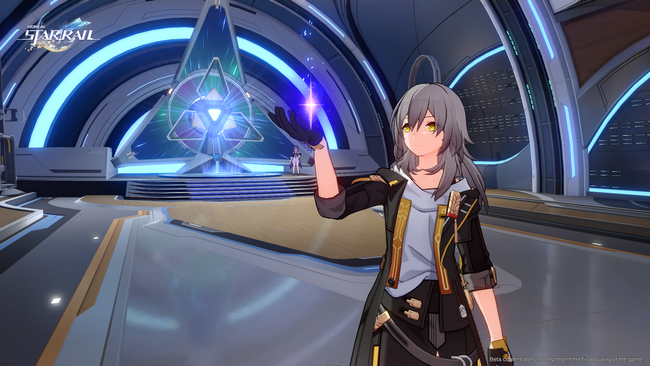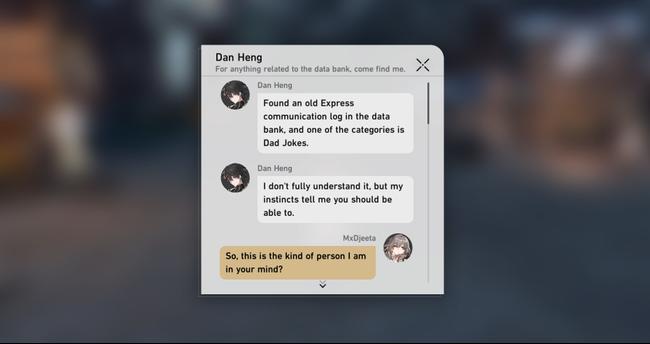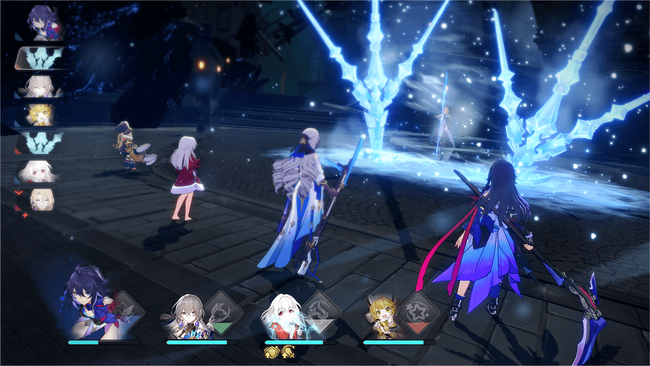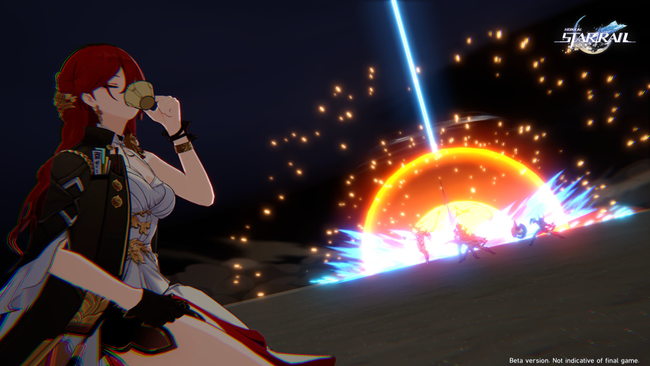
Honkai: Star Rail is an impressive beginning that isn't derailed by business...yet
If you're familiar with the games of HoYoVerse, such as Genshin Impact and Honkai Impact 3rd, you’ll find a lot of common ground anchoring the roots of Honkai: Star Rail. But even for seasoned players like yours truly, there’s something different about the company’s latest release - a certain spark that helps it stand out in its first few hours. With luck, that energy will help set it apart as an equally worthwhile journey to take alongside its peers. That’s a point worth considering because it’ll be a long one, because, like Genshin and Honkai Impact 3rd, Star Rail is a free-to-play live service game, with all the requisite demands and tricks woven into the design to get its players engaging with it on the daily.
That said, even before the mild pressures of daily missions and the stamina-like "Trailblaze Energy" currency even unlock, Honkai: Star Rail reveals itself as a gorgeous, slickly-produced example of what one might call a “traditional” turn-based RPG. It's so reminiscent of the classics that it wouldn't look out of place on the shelf next to the likes of The Legend of Heroes titles or other luminaries of the PS2 era of JRPG development.
Honkai: Star Rail’s sci-fi-tinged story begins with a pair of unknown malefactors causing chaos in a far-off space station. They arrive and plant some strange object - a "Stellaron" - in the chest of the Trailblazer, your gender-selectable player avatar. A few tutorial fights later, you’re brought onboard the Astral Express, a spacefaring train full of misfits and adventurers. The Express journeys the galaxy, following the route of a long-gone “Aeon”, one of many space deities that influence affairs throughout the universe. With the McGuffin in your body serving both as a key to solving different crises caused by the Aeons and their devotees, as well as a sign of your connection to the Astral Express’ patron Aeon, your job becomes one of traveling the stars, solving problems.
There’s a pleasing episodic quality to your adventures on the Express that contrasts Honkai: Star Rail’s main story with the sprawling epics that characterize other RPGs. Rather than pursuing a single lead from the beginning to its end, your journey is a series of stops along the way to an as-yet-unknown destination. Each planet you halt at has its own story and its own set of problems to solve, as well as unique contexts and characters to meet and work with (or against). From the two-tiered city of Belobog on the frozen planet of Jaroli-VI to the cosmopolitan future-Chinese colony ship of the Xianzhou Luofou, each destination feels like a unique place to visit, then move on from.

In contrast to Genshin Impact, the worlds of Honkai: Star Rail feel compact and focused. Even its largest maps pale in comparison Genshin’s continent-sized world of Teyvat. That said, it's traded picturesque vistas and long sightlines for a sense of life and density that belies each zone's smaller size. Every zone practically overflows with little bits of flavor text, mini-adventures, and other things to poke at and experience.
At poke at things you will, thanks to the game's sharply-written, often quite funny, personality. Honkai: Star Rail is the kind of RPG where you can click on every trash can multiple times and find unique descriptive lines for each. The sci-fi setting allows for every character to have a smartphone (complete with a bespoke phone case), where you can text each other and roast - or be roasted - in the group chat. You can get into a mini-substory after you find a talking plant that begs you for water. You’ll crawl into a closet to ambush a hapless hotel worker delivering your room service. You'll eat garbage out of a dumpster, much to the chagrin of your companions. None of this is consequential to the plot, but these antics imbue the game with a wit that's worlds away from the earnest-but-stiff tone that pervades the writing of other HoYoVerse titles. I found some genuinely laugh-out-loud funny bits through the early game, and it’s all supported by a creative - if somewhat messy, grammatically speaking - English-language localization effort. Notably, the game gives your player character a surprising amount of room to express themselves, to the point where the version of the Trailblazer that exists in my mind, through her dialog responses, is best characterized as a sort of "gremlin-mode creature". Perhaps it's apropos that her initial approach to combat consists of clubbing enemies into oblivion with a fancy baseball bat.

Honkai: Star Rail also puts its own spin on traditional turn-based RPG combat. Each of the available characters at launch (two of which are different forms of your Trailblazer) follows one of seven “Paths”, a trait roughly analogous to their play style, and has one of seven elemental types. For example, the first form of your Trailblazer is as a Physical-element character on the Destruction Path, meaning she does damage up front with their bat. Later on, they’ll unlock a Fire-element Preservation Path archetype, allowing them to tank hits for the party and increase their own defense.
Each character has a basic attack, a skill, and an ultimate, that, once charged, can be used at any time, allowing players to stack up their party’s most powerful or useful techniques. A “Weakness Break” system that encourages targeting enemies’ elemental weaknesses also encourages having a varied setup to meet any given enemy encounter. With this interplay in mind, Honkai: Star Rail’s combat comes across as a clever and meaty variation on the Shin Megami Tensei series’ Press Turn system.

There’s also the implicit promise of more options, should players choose to roll for new characters on Honkai: Star Rail’s gacha system. Thankfully for those uneasy about HoYoVerse’s choice of business model, the game hands off a good spread of 4-Star characters of varying elements as part of the story. In my experience, I didn’t feel like I was running into a “wall” by not having the newest or rarest characters due to my bad gacha luck. My "pure free-to-play" party was more than enough for any given challenge in the early game.
And that’s also where the rub is. Honkai: Star Rail is and will remain a free-to-play game supported by gacha microtransactions. Though the game’s balance seems fine today, there’s no telling what HoYoVerse is planning for future characters, and how it intends to tempt players into gambling on one banner or another. Even now you can see shades of where things might lead: In certain challenges having healers in the party becomes more of the priority, and at the moment, you only get one healer for free, which tempts you to try rolling on the gacha for, say, the 5-Star healer, Bailu, or perhaps for a new character that'll be strong enough to allow an alternative strategy.

The other now-familiar monetization schemes of Genshin Impact also surface in Star Rail. There's a battle pass-like system with rewards and tiers earned by completing daily and weekly missions. There's a banner system for the "Light Cone" accessories, some of which add powerful passive effects tailor-made for certain characters to synergize with. There's the "Eidolon" system that unlocks potentially game-changing effects for certain characters if you luck into duplicates of them in the gacha. This is a good place to reiterate that the business models that support Genshin Impact and Honkai: Star Rail are inherently predatory and quite dangerous for folks who are vulnerable to addiction. Speaking as an avid player of gacha titles (Genshin included), I wouldn’t blame anyone for wanting to stay away.
With that in mind, it's a bit disappointing to see HoYoVerse continue to run with the model for Honkai: Star Rail, considering how perfectly it might work as a single-purchase premium title rather than a live service gacha-based one. As much as it's bad form to write about what a game could be rather than what it is, if any developer anyone could have afforded to take the risk of not going with this choice of business model, it's the developer that's flush with Genshin Impact money. Those that can make their peace with the business of its operation, though, will find a pretty and endearing beginning in their journey with Honkai: Star Rail.
Honkai: Star Rail is available for PC, iOS, and Android. Versions for PS4 and PS5 are in development.